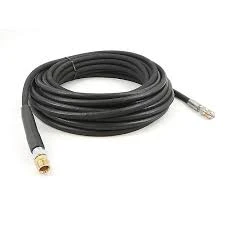brake lines on car
Understanding Brake Lines on a Car Essential for Safety
When it comes to the safety and functionality of your vehicle, one of the most critical components is the brake system. Within this system, brake lines play a vital role, enabling effective communication between the brake pedal and the brake components at each wheel. Understanding brake lines can not only enhance your appreciation for automotive engineering but also ensure that you maintain your vehicle properly for safe driving.
What Are Brake Lines?
Brake lines are tubes or hoses that carry brake fluid from the master cylinder, located in the car's engine compartment, to the brake calipers or wheel cylinders at each wheel. They are typically made of metal or reinforced rubber, depending on their specific function and location. The primary purpose of brake lines is to transmit hydraulic pressure, which results in the engagement of the brakes when you press down on the pedal.
Types of Brake Lines
There are two main types of brake lines rigid (or hard) lines and flexible (or soft) lines. Rigid lines are generally made of metal, such as steel or copper, and are used in areas of the vehicle where flexibility is not required, such as along the frame of the car. Flexible lines, on the other hand, are usually made of rubber or a rubber composite and are used in areas that need to accommodate movement, such as at the wheels where the suspension may compress and extend.
Importance of Brake Lines
brake lines on car

The integrity of brake lines is crucial for the safety of any vehicle. If a brake line becomes damaged, corroded, or leaks, it can lead to a significant loss of hydraulic pressure, resulting in reduced braking efficiency. This can cause longer stopping distances and, in extreme cases, brake failure. Regular inspections of brake lines can help detect issues before they escalate into dangerous situations.
Common Problems with Brake Lines
Over time, brake lines can suffer from various issues. Corrosion is a common problem, especially in regions where roads are salted during winter. It can lead to holes in the line, causing brake fluid to leak. Additionally, improper installation or damage from road debris can result in fractures or kinks in the lines, further compromising braking performance.
Signs that you may need to inspect your brake lines include a loss of braking power, the brake warning light illuminating on your dashboard, or leaking brake fluid underneath your vehicle. If you experience any of these issues, it is critical to have a professional mechanic examine your brake system promptly.
Maintenance Tips
To ensure your brake lines remain in good condition, regular maintenance is essential. Brake fluid should be changed per the manufacturer’s recommendations, as contaminated fluid can lead to internal corrosion of the lines. Moreover, having your brakes inspected during routine maintenance can catch any potential problems early.
In conclusion, brake lines are a vital component of your car’s braking system that should not be overlooked. Understanding their function and the importance of maintaining them can significantly enhance your vehicle's safety and reliability. Whether you are a car enthusiast or simply a responsible driver, paying attention to brake line maintenance can help ensure peace of mind on the road. Remember, your safety is always worth the extra effort.
-
Ultimate Spiral Protection for Hoses & CablesNewsJun.26,2025
-
The Ultimate Quick-Connect Solutions for Every NeedNewsJun.26,2025
-
SAE J1401 Brake Hose: Reliable Choice for Safe BrakingNewsJun.26,2025
-
Reliable J2064 A/C Hoses for Real-World Cooling NeedsNewsJun.26,2025
-
Heavy-Duty Sewer Jetting Hoses Built to LastNewsJun.26,2025
-
Fix Power Steering Tube Leaks Fast – Durable & Affordable SolutionNewsJun.26,2025

